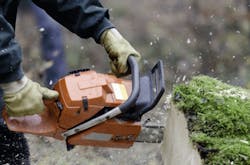Are you tired of trying to understand or explain the different cut-resistance levels? When it comes to cut-resistant work gloves and protective arm sleeves, why is there no easy-to-follow guide relating to this? Joe Geng, vice president of Superior Glove, offers this infographic that depicts the different cut-resistance levels and the tasks for which they’re suited.
“Globally, there are two different performance standards for cut resistance: the European standard EN388, used in Europe, APAC, South America, Mexico and parts of Canada and the US; and the ANSI/ISEA 105 standard, mainly used in North America,” said Geng. “These different standards are not identical and do not correlate, potentially causing confusion for end-users in their specification process for selecting the right glove for their application.”
He notes it is important to understand the differences between these standards, as well as the test methodologies specified in these standards, in order to set the right expectations for performances and specifications. This infographic explains these differences and is available to downloaded to save or print.
Geng is a frequent contributor to Superior Glove’s Work and Safety Blog.
About the Author

Sandy Smith
Sandy Smith is the former content director of EHS Today, and is currently the EHSQ content & community lead at Intelex Technologies Inc. She has written about occupational safety and health and environmental issues since 1990.

